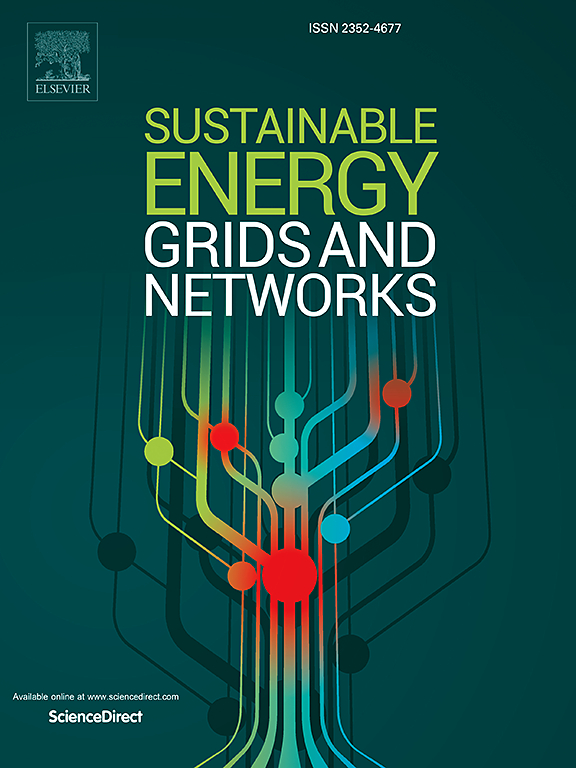Affine optimization method for probability interval power flow of distribution network based on holomorphic embedding
IF 5.6
2区 工程技术
Q2 ENERGY & FUELS
引用次数: 0
Abstract
With the large-scale integration of renewable energy into distribution networks, the impact of uncertainty on power systems is becoming increasingly significant. Addressing uncertainty in power flow calculations is critical for analyzing how the integration of distributed energy resources such as photovoltaic and wind power affects power flow distribution in distribution networks. This paper proposes an affine optimization method for probability interval power flow of distribution network based on holomorphic embedding. First, the affine model of system bus voltage and power is established, and an embedding factor introduced to construct the holomorphic embedding affine optimization power flow model. The focal element model of distributed photovoltaic output is established, transforming the probabilistic interval power flow model based on the focal element model into the holomorphic embedding affine optimization power flow model. The hybrid box-ellipsoid set correlation model for interval variables is established to describe distributed photovoltaic output correlation; this model is converted into affine constraints for joint solution within the holomorphic embedding affine optimization power flow model. Finally, the probabilistic boundaries of the distribution network probabilistic interval power flow solution are obtained based on evidence theory. Simulation results demonstrate the holomorphic embedding affine optimization power flow algorithm exhibits lower conservatism than the Taylor expansion affine power flow algorithm, making it more suitable for uncertain power flow analysis in larger fluctuation intervals. Simultaneously, the hybrid box-ellipsoid set correlation model achieves higher accuracy than other models and effectively reflects the influence of correlation coefficients on the calculation results.
基于全纯嵌入的配电网概率区间潮流仿射优化方法
随着可再生能源大规模并网,不确定性对电力系统的影响日益显著。解决潮流计算中的不确定性对于分析分布式能源(如光伏和风能)的集成如何影响配电网中的潮流分布至关重要。提出了一种基于全纯嵌入的配电网概率区间潮流仿射优化方法。首先,建立系统母线电压和功率的仿射模型,引入嵌入因子构建全纯嵌入仿射优化潮流模型;建立分布式光伏输出的焦元模型,将基于焦元模型的概率区间潮流模型转化为全纯嵌入仿射优化潮流模型。建立了区间变量的混合盒椭球集相关模型来描述分布式光伏输出相关性;将该模型转化为仿射约束,在全纯嵌入仿射优化潮流模型中进行联合求解。最后,基于证据理论得到了配电网概率区间潮流解的概率边界。仿真结果表明,全纯嵌入仿射优化潮流算法比Taylor展开仿射潮流算法具有更低的保守性,更适合于较大波动区间的不确定潮流分析。同时,混合盒椭球集相关模型比其他模型具有更高的精度,有效地反映了相关系数对计算结果的影响。
本文章由计算机程序翻译,如有差异,请以英文原文为准。
求助全文
约1分钟内获得全文
求助全文
来源期刊

Sustainable Energy Grids & Networks
Energy-Energy Engineering and Power Technology
CiteScore
7.90
自引率
13.00%
发文量
206
审稿时长
49 days
期刊介绍:
Sustainable Energy, Grids and Networks (SEGAN)is an international peer-reviewed publication for theoretical and applied research dealing with energy, information grids and power networks, including smart grids from super to micro grid scales. SEGAN welcomes papers describing fundamental advances in mathematical, statistical or computational methods with application to power and energy systems, as well as papers on applications, computation and modeling in the areas of electrical and energy systems with coupled information and communication technologies.
 求助内容:
求助内容: 应助结果提醒方式:
应助结果提醒方式:


